The Article
6000CDT CD Transport From Audiolab
12th July 2019
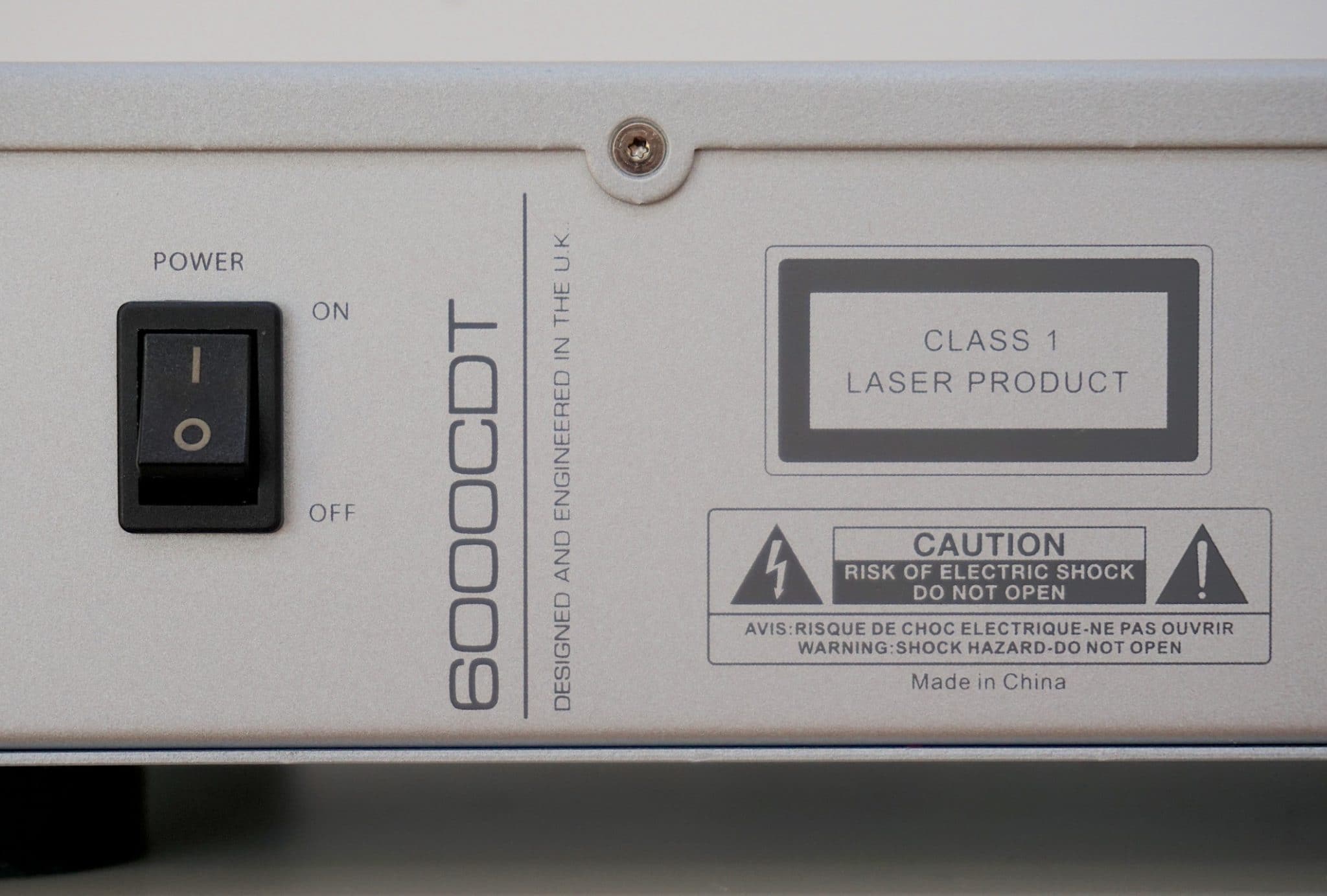
A basic, simple, stripped CD transport? In this day and age? Isn’t Audiolab reading the script? Paul Rigby reviews, salutes and offers live sacrifices to this incredible machine
I never thought I’d see the day. The Audiolab 6000CDT is a CD transport. I say again, it’s a CD transport. And…nothing else. Nothing. There’s no Bluetooth. There’s no headphone socket. No networking this or wireless that.
It’s a transport. You put a CD in it. That’s the deal.
Let me explain why that’s a talking point. The hi-fi industry has got its knickers in a twist about packing every chassis it can find with “added value”. Which also means a safer bet for “higher profits”. It’s the shotgun approach. Pack enough goodies into a box and some passing hi-fi fan will surely like at least one of those included features and so you’ll be assured a sale. Modern hi-fi kit is turning into mini-department stores. Each component is becoming its own one-stop shop.
So all-in-one units are in vogue but cross-over components are very common indeed. Headphone amps have DACs, integrated amps include Bluetooth, turntables feature USB plugs and phono amps and so it goes.
The trouble is, hi-fi components don’t like being placed in close proximity with each other because of cross contamination of electrical noise that results in a veiling of subtle and nuanced information. It damages the delicate stuff in sound. It’s not a good thing. Hi-fi components much prefer to be separate and alone. Isolate a hi-fi component and it will reward you with better sound.
So, for example, there’s plenty of great integrated amps out there but there’s even better sounding pre-amp/power amp combos out there too. Why? Because you’ve isolated the pre-amp bit from the power amp bit. Separate the power amp into two separate monoblocks and sound quality takes a further hike upwards. You can apply the same theory to any component in the hi-fi chain. That includes separating an integrated CD player into a transport and DAC.
This box from Audiolab, the 6000CDT, is different from the rest because it’s stripped of extra technologies. It moves against the grain and accepted wisdom. Because of that, it had my attention and I had only taken the thing out of the box. I hadn’t even put the plug in yet.
OK, so it’s a simple box that does one job and that’s a novelty in this day and age. So what else?
The 6000CDT fits very easily into the Audiolab family in terms of aesthetics. If you happen to have a 6000A amplifier, for example, then you’ll notice that the 6000CDT is a perfect visual match for that.
It also uses the same slot-type transport as seen on the 8300CD (which is priced around the £1,000 mark). I’ve had a love-hate relationship with slot-type transports in the past. Many have a bad attitude. Some work when they want to and others demand that you play out a strange dance if you want to listen to your CD with any sort of success. For example, I remember one example from the past that will remain nameless where you had to rest the CD in the slot. Pause. Then give it a gentle nudge. Anything else and the transport would spit out the disc. Thankfully, the Audiolab removes this sort of palaver. It’s firm, solid and works as it should. Which is a big relief.
Better still, in operation, the transport uses built-in memory that reads ahead to reduce errors.
The thorny issue of jitter is also addressed by Audiolab. Jitter is an odd thing – it sounds odd too. Jitter is supposedly produced by digital storage hardware, creating variations in the bitstream that changes the sound waveform itself (although there are also thoughts that jitter is fixed and is part of the actual disc itself in varying levels and that it is pressed into the disc during imperfect duplication). If I was forced to find an analogue comparison, I’d probably compare the overall effect to wow and flutter on a turntable (I know, it’s not exactly the same but it’s a generalised comparison). So, even though the information itself is, as it where, ‘perfect’ the jitter shifts that information about a bit. So you get timing errors. The sound takes on a slightly distorted demeanour. Jitter (wherever it might come from) has been a problem for a long time and the original developers of the first CD technologies were all too aware of the effect. Apparently, even a 0.1 nanosecond jitter shift is audible – that’s how sensitive our ears are, folks.
To combat this effect, Audiolab took it upon itself to have a temperature-compensated crystal oscillator master clock installed to lower the jitter effect at the transport end of the equation. Audiolab says that the jitter effects are “vanishingly low” but we’ll see about that during the sound tests.
More than that, the coaxial output has been looked at and isolated to reduce noise. This is the most important socket on the 6000CDT because this will be the socket that connects to your DAC. On the 6000CDT, the coaxial socket is fed from a differential line driver.
The box itself is simple, minimal and to the point. The front offers a CD loading slot, stand-by button and standard CD play buttons.
The rear? Apart from the in-house trigger buttons to connect to other Audiolab products, you get a power socket, rocker power switch and two digital outs. That’s it.
To me, the 6000CDT is beautiful. Not because it has been styled or moulded or has fancy bits of metal stuck all over it. No, I think it is beautiful because it is simple. I hoped that the philosophy of the outer chassis would be replicated inside too.
SOUND QUALITY
I began by comparing this specialist CD transport with an integrated CD player (i.e. a CD player where the transport and DAC exist within a single chassis).
Because of budget restrictions, many users upgrade their CD player in stages and gradually, not by buying a brand-new CD player but by plugging that CD player into another DAC. The integrated CD player then becomes a sort of make-shift transport.
To save cash and to begin with, the ‘new’ DAC is often the unit sitting in their amplifier (maybe the amplifier is newer and the amp’s DAC of a superior specification). Later, they will upgrade again and buy a separate DAC for their make-shift transport. That is, they will plug in a new DAC into the back of an integrated CD player.
I wanted to test both of these scenarios with the 6000CDT. Just to see if I could hear any sonic differences.
I connected my reference integrated CD player to the Audiolab 6000A amplifier. The DAC inside a 6000A is an ES9018 Sabre32 Reference, so well worth exploiting.
At this point, the reference transport was used to play the 6000A’s DAC. Then I removed the integrated CD player and then connected the 6000CDT transport to the 6000A amplifier and noted the difference.
Doing the test, I played Out on the Weekend from Neil Young on the 1972 album, Harvest (Reprise).
Just how would the specialist transport compare to the transport from the all-round CD player? Is a specialist transport really any better in performance terms? Just how different is the 6000CDT?
It’s different. Completely different. “Hey, have you just put on a different CD?”-different. That’s how different.
The leap in quality was quite shocking, actually. Imagine you’ve drawn a picture of your living room on a piece of paper. It’s a sort of comic-strip effect drawing with everything you know in the room, on that paper. It’s a familiar sight but, as I say, it’s on paper. That’s the reference CD player reference (which I hasted to add was three times the price of the 6000CDT).
Then walk into the real 3D, living (and breathing) room. Walk around in it. Look side on and behind. Jump up and down in it.
That’s the 6000CDT.
That’s how different.
That’s not to deride my reference either, which is a superb integrated CD player and knocks spots off much of the competition at a similar price. It is highly recommended as an integrated CD player. The thing is, though, it is integrated. It is not a specialist transport. In some ways, it’s terribly unfair on my reference to use it in this fashion but that’s what many hi-fi users do. To upgrade their CD, they add a separate DAC and use the old player as a transport. It’s a standard fudge. So, to that effect, the fact that I used this particular integrated CD player in this test is immaterial. I could have used one of dozens of different branded integrateds and the same result would have occurred.
In fact, I did. I quickly brought in a mid-priced CD player by Cambridge just for this brief test. Another very nice CD player. Excellent. Again, highly recommended as an integrated CD player. Same result? Same result.
The Audiolab 6000CDT is a specialist you see. That’s the difference here. It’s designed to do one job. It does it superbly.
OK, so how in sonic terms?
First off is the soundstage. This is the place that contains the music. This is where the music comes from. Get this framework right and the quality of the music will have more chance to shine. The 6000CDT does just that because the soundstage was completely remodelled. Which is why I really did think for a brief second that I’d put a new CD on to play. The effect was more than 3D. The music was pushed backwards but not just at the stereo image point – a usual place for 3D effects to occur. No, more than that, space was pushed left and right too, right across the breath of the soundstage. This gave a large rectangular space at the rear of the soundstage for the music to work with. And space is what increased here, lots and lots of space. This meant that the guitar sounded, how to describe this, ‘alone’ is what I’m scrambling for here. I felt that I could have got up off my listening chair and moved my hands around the sides and back of the guitar and never touched the guitar or what was next to it. There seemed to be a discernible gap between it and the vocal.
Detail was much increased too – tonal variation was also increased but more than that, I was hearing far more resonance vibration from the strings. Those little imperfections that tell you that a human being is playing this thing. They added emotion to the guitar playing.
The drums too were different. Bigger with a slightly hollow sound that suggested that these drums had size but not necessarily mass. It was a great effect because the tonal effects added realism to the overall arrangement.
Young’s vocal now had an almost lost little boy feel to them. An innocence that just wasn’t present beforehand.
The other great thing about the 6000CDT was the instrumental separation. Previously, the cymbal strikes and hard, pumping acoustic guitar strums occurred at exactly the same moment so hearing the cymbal strikes on their own was a tough call. Not now. Oh no. I could plainly hear both and separate too. That one element sold the 6000CDT as a valid piece of hi-fi equipment to me. Right there, I was a convert.
I then turned to Rosemary Clooney’s Bluebird CD release of the original 1960 album, Rosie Solves the Swinging Riddle, with arrangements from Nelson Riddle and the track, Get Me To The Church on Time.
The presentation provided lots of atmosphere because Clooney sounded like she was recording her track in a large auditorium in front of a live orchestra. That sense of space, the grandeur and the sense of immediacy was there in buckets, with plenty of reverb from the upper mids swilling around, adding a vivacity and energy to the piece. Tubular bells and cymbal taps offered delicacy and fragility from the treble area while percussion provided welcome tonal balance in bass terms. Transients were sharp and accurate while trumpets and saxes were both clean yet resonant.
I then removed the 6000CDT from the 6000A amplifier.
It was time to move the test onwards. To get serious, as it where. I wanted to move away from a built-in DAC and find an external model. So I hooked the 6000CDT to the most basic, the cheapest of modern DACs I could find. In my case an iFi iOne DAC, priced around £200 or less. And a brilliant little DAC it is at this price point.
So, in effect, you’re looking at a complete CD player (i.e. transport plus DAC) for somewhere in the region of £500. Give or take.
As an ‘unfair’ comparison, I brought in a ringer (which you won’t find in the reference list below). A highly respected, award-winning integrated CD player costing around £1,000.
It should have walked all over the 6000CDT/iOne combination. It didn’t. In fact, the results were turned around. The 6000CDT/iOne walked all over the respected, award-winning integrated CD player.
I sat there for a bit. Just a bit stunned. And not to say just a bit excited as well.
To repeat, this £500 (or so) transport/DAC combo not only out-performed a top of the line, £1,000 CD player, a CD player that in itself has vanquished most of the immediate competition but it flew way above that CD player’s performance level.
How exactly? Firstly, Audiolab’s now familiar tonal balance. I heard this on the 6000A amplifier and I now heard it on the 6000CDT transport. The notion of allowing bass a position in the overall tonal presentation appears obvious but is rarely, properly heard on hi-fi under £1,000. On the 6000CDT, bass was abundant but never over-arching. It never swamped the soundstage and didn’t here. What it did was make sense of drums, make sense of bass guitar and added weight to the strums of the acoustic guitar. That bass wasn’t just a tone either, it was organic and characterful. There was detail and information here. That separate, isolated DAC decreased noise, increased detail, air and space in and around the midrange, allowing those essential and tiny details to spew forth.
The midrange was never bothered by bass. It occupied its own space and gave the ear more than enough detail to fascinate. The guitar on the Audiolab/iFi combo was now open, informative, sparkling and sounded like a collection of strings pinned to a resonant box. The ‘famous’ CD player muddied the sound, in comparison.
One more notable element, the 6000CDT/iFi produced a quite superb treble response. Light, delicate with reverb tails a-plenty. You could hear the treble on the integrated CD player but you had to work a little to separate it from the background. It sounded a little dull when compared to the 6000CDT/iFi.
Look, I won’t name the CD player. The manufacturer was kind enough to loan it to me and I wasn’t going to reward them by performing a hit job on their pride and joy. Also, I don’t want to point the finger at this CD player and infer that it’s not up to the job. It is up to the job, as an integrated CD player. It remains excellent. A superb CD player. Trouble is, the 6000CDT has just moved the goalposts for all CD players under £1,000. Re-written the script. Invented a whole new ball game.
I then removed the 6000A amplifier and allowed the transport to specialise even further, adding an improved DAC to it. In this case, the Chord Qute HD and swopped over to Rosemary Clooney.
Connected to this specialist DAC, the 6000CDT offered an increase in maturity and sheer quality.
So cymbal taps sounded full and rich in variation while the tubular bell strikes (the wedding bells from the song, I guess) now offered a real, deep, right from the gut response to being hit by the hammers. The bell sound sounded like they started from deep within the bell and rose up from there. The sound was full and rather majestic.
Clooney’s vocal also now had a smile in her voice. She was obviously enjoying herself here. You could actually hear her grinning as she was singing certain lines. The undertone from Clooney was, “This is fun!”
OK, good, good, good. Shall we step it up again? I upgraded the DAC once more to a yet more expensive Benchmark. Switching quickly back to Neil Young, the music now sounded…expensive. Rich and fruity in terms of natural detail with a combination of authority and tonal balance, the 6000CDT shouted quality from the rafters. Everything from the characterful acoustic guitar drums, the decisive thuds from the percussion, the melancholic howl from the lead guitar, the multi-layered response from the harmonica. The effect was wholly impressive.
The enhancements were obviously greatest with the more expensive Benchmark DAC (priced around the £2k-£3k mark) but were just as effective with my old Chord Qute HD (which you can pick up for around £500 from eBay) and the low cost iFi iOne at £200 (or less).
Consider this critical fact, though. The 6000CDT registered and allowed for a vast increase in sonic quality from the iFi iOne to the Chord and from the Chord to the Benchmark. This is further proof that the 6000CDT is not a bottleneck in itself. The CDT6000 has plenty of capacity in terms of sonic improvement. There is no hint that the 6000CDT hampers any future upgrade. Confirmation that the 6000CDT is quality. It can take upgrade, after upgrade, after upgrade and the sound continues to improve. The 6000CDT moves up a gear each time. How far can it go? I have no idea yet. I had to stop somewhere, to publish this review so the jury is out. I have no idea how good the CDT6000 actually is yet. That, my friends, is pretty thrilling stuff.
You should see the 6000CDT as a secure investment to a long (long) term CD upgrade path, therefore.
CONCLUSION
I have to ask you this. Why aren’t we all jumping up and down, celebrating and organising street parties to salute the Audiolab 6000CDT CD transport? This box is a major entrant onto the hi-fi market place. It deserves the plaudits and more.
I had to look twice, no three times, at the price of this transport. The Audiolab screams quality, transforms an integrated amplifier’s built-in DAC, takes full advantage of a separate DAC, raises the quality of your CD music to ceiling busting heights and you’re only paying £379? Ha! Oh, really? Oh, yes.
If you want to play your CD collection with a transport/DAC combination that will not only scare the living bejeebers out of dedicated integrated CD players of five times the price but also threatens to reduce every integrated CD player under £2,500-£3,000 (maybe higher – I just don’t know yet) into aluminium-flavoured jelly, then grab one of these transports and hook it up to your favourite DAC. In fact buy two and keep the other as a backup, just in case.
The 6000CDT revolutionises budget CD play. It’s as simple as that. And that’s why it does the job so well – it’s simplicity. That’s the key to the 6000CDT. It’s not stuffed and bloated with other useless features. Its purity of build and approach lifts CD quality sound to unimagined heights at this price point. As such, it’s well worth membership of the exclusive maximum score club – a Golden Groovy. All hail the Audiolab 6000CDT!
AUDIOLAB 6000CDT CD TRANSPORT
Price: £379
Website: www.audiolab.co.uk
TO BUY CLICK BELOW:
USA – https://amzn.to/3oOmyV9
EUROPE – https://amzn.to/35XkNfB
GOOD: expansive soundstage, tonal realism, 3D presentation, simplicity of design
BAD: nothing
RATING: 10
[Don’t forget to check out my Facebook Group, The Audiophile Man: Hi-Fi & Music here: www.facebook.com/groups/theaudiophileman for exclusive postings, exclusive editorial and more!]
REFERENCE
Benchmark DAC2 HGC
Chord Qute HD DAC
iFi iOne DAC
Leema Essentials CD Player
Aesthetix Calypso pre-amp
Icon Audio MB845 Mk.II monoblock amplifiers
Quad ESL-57 speakers with One Thing upgrade
Blue Horizon Professional Rack System

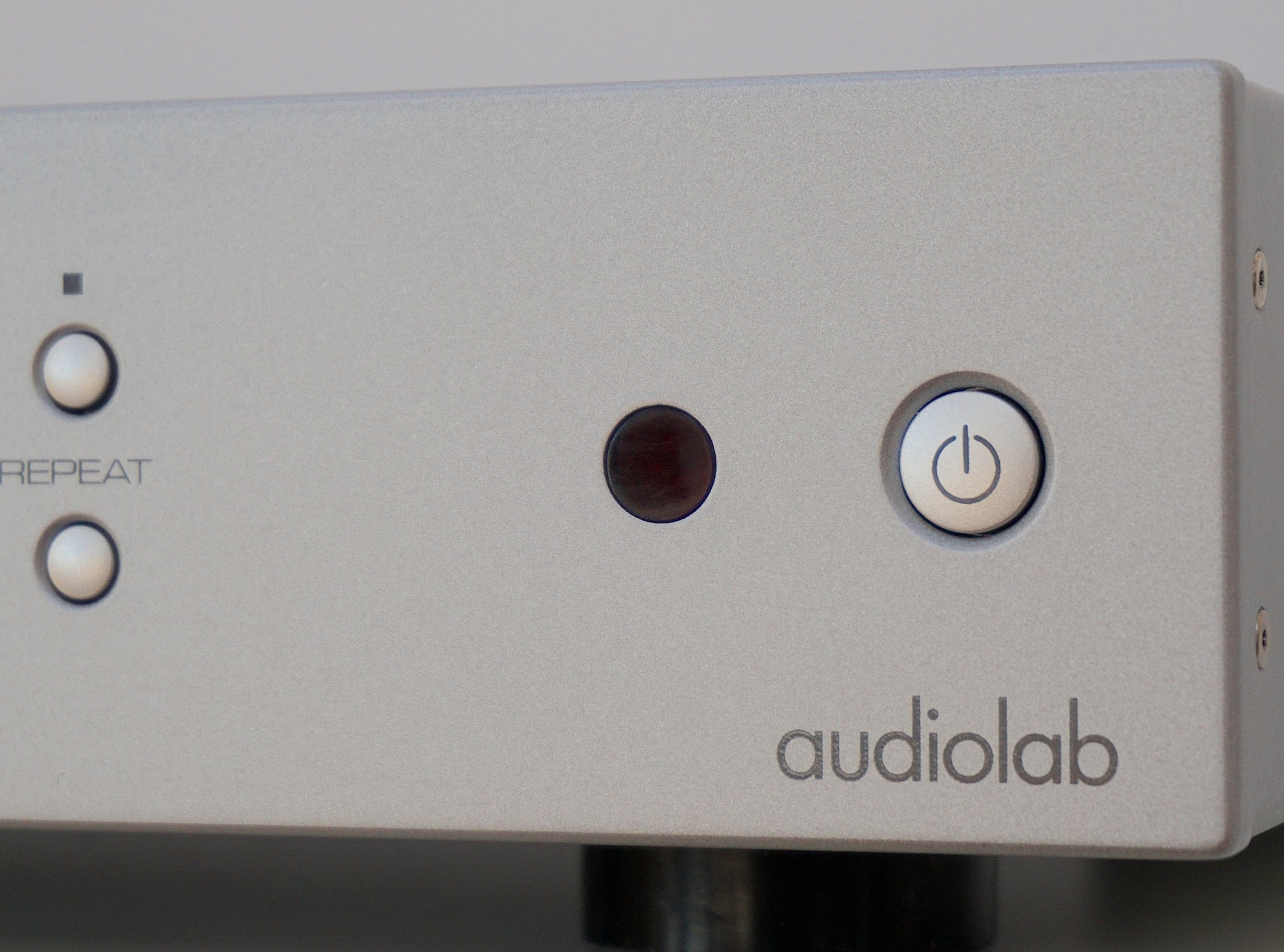
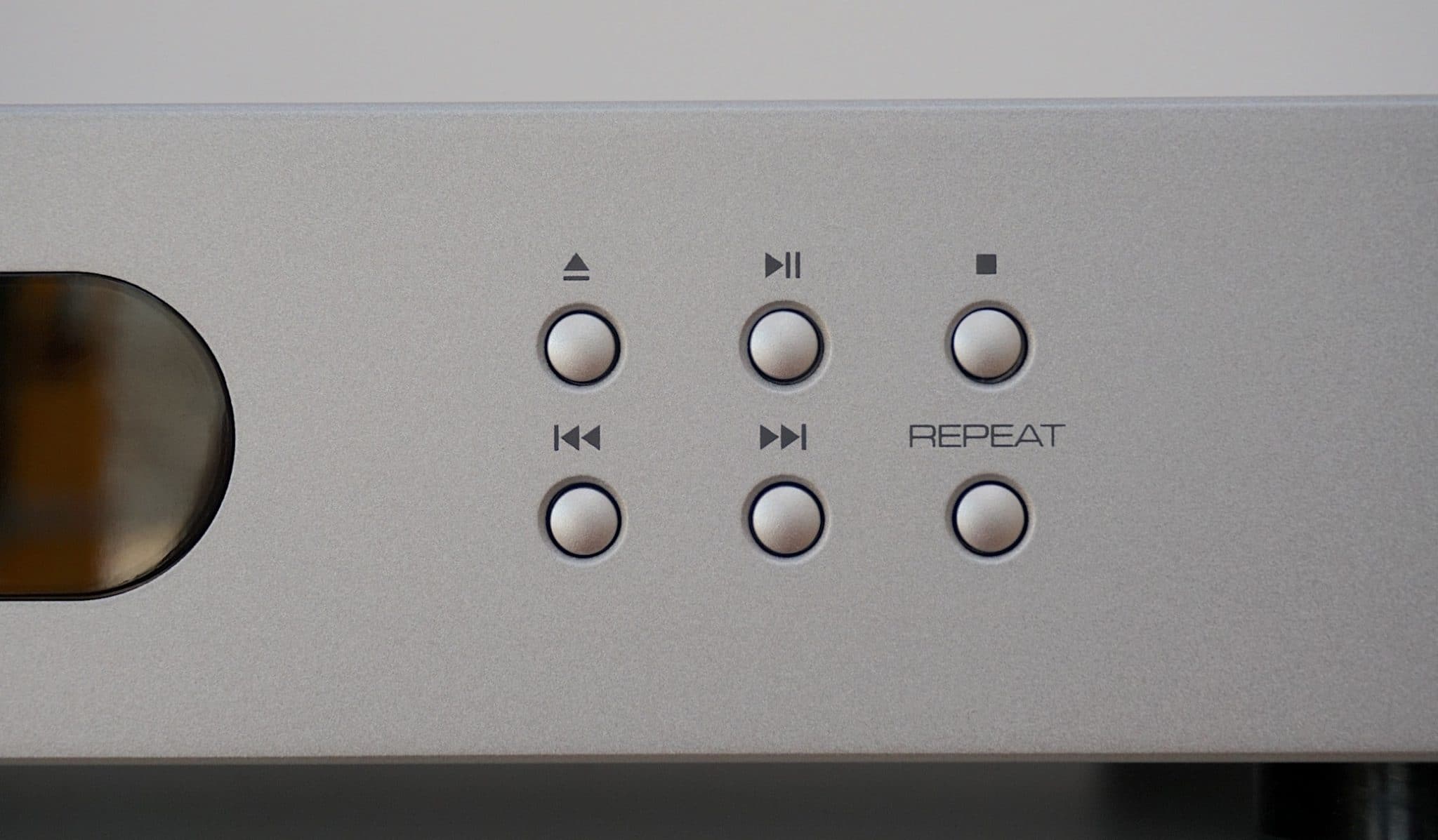
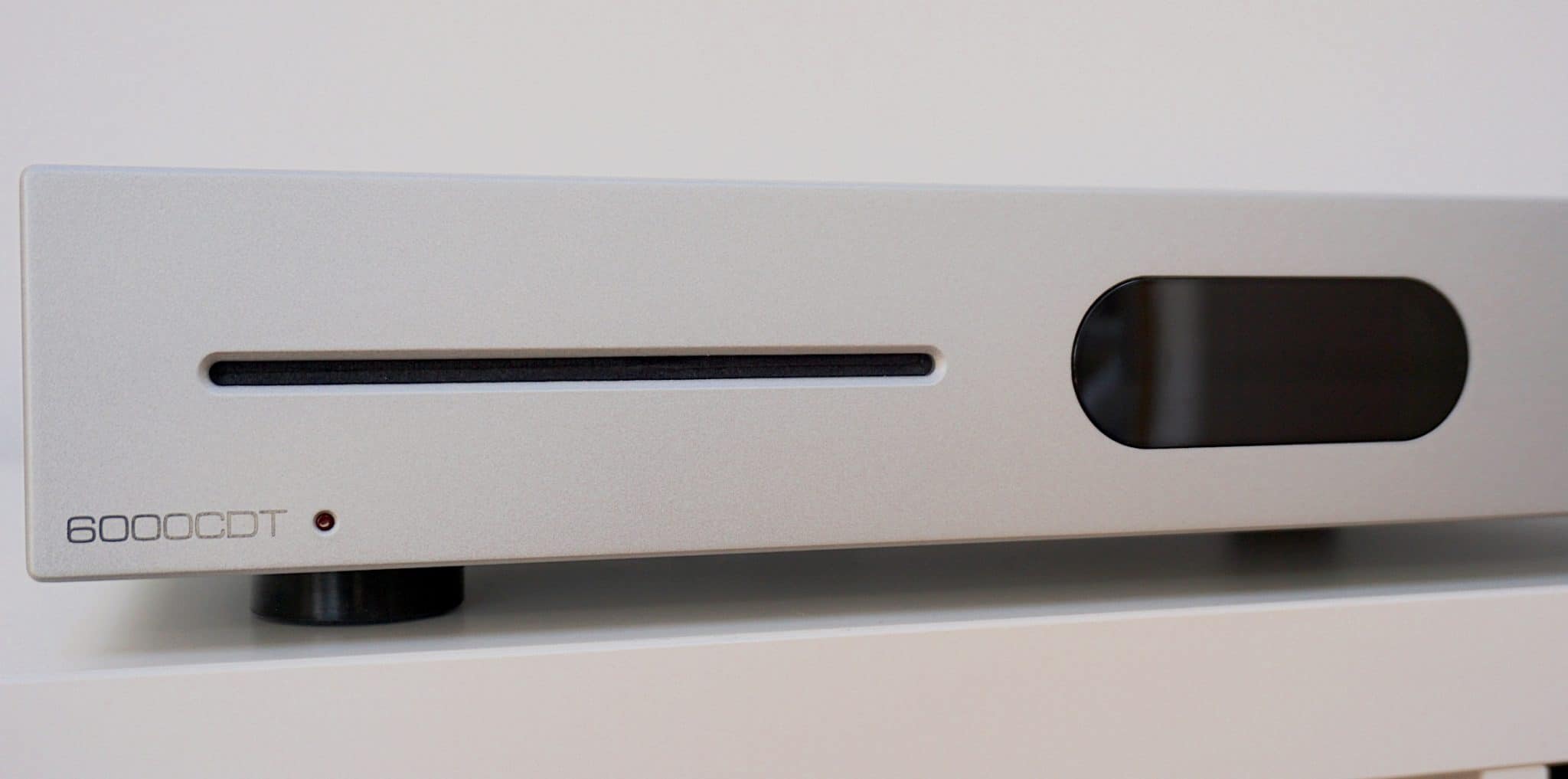
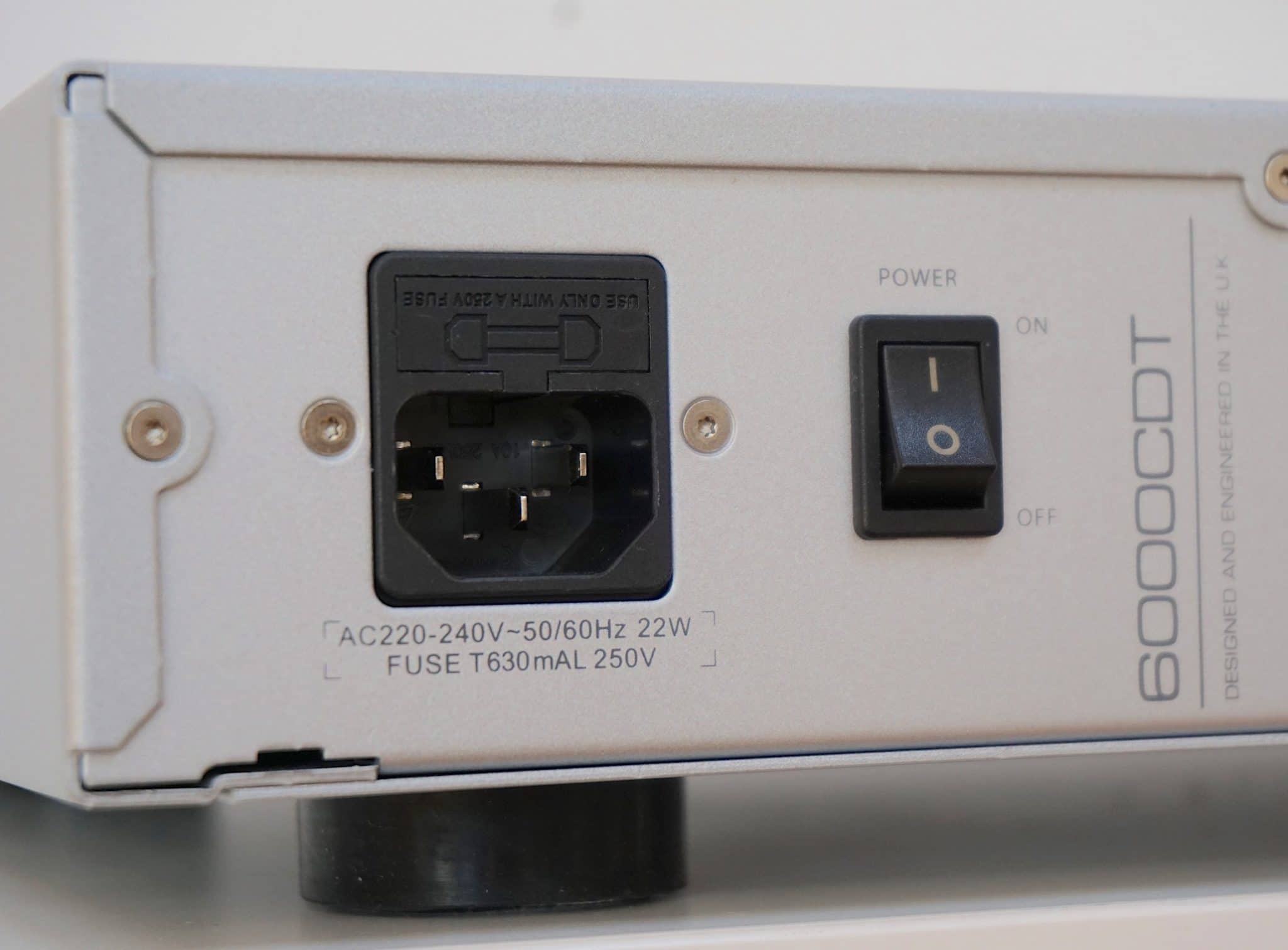
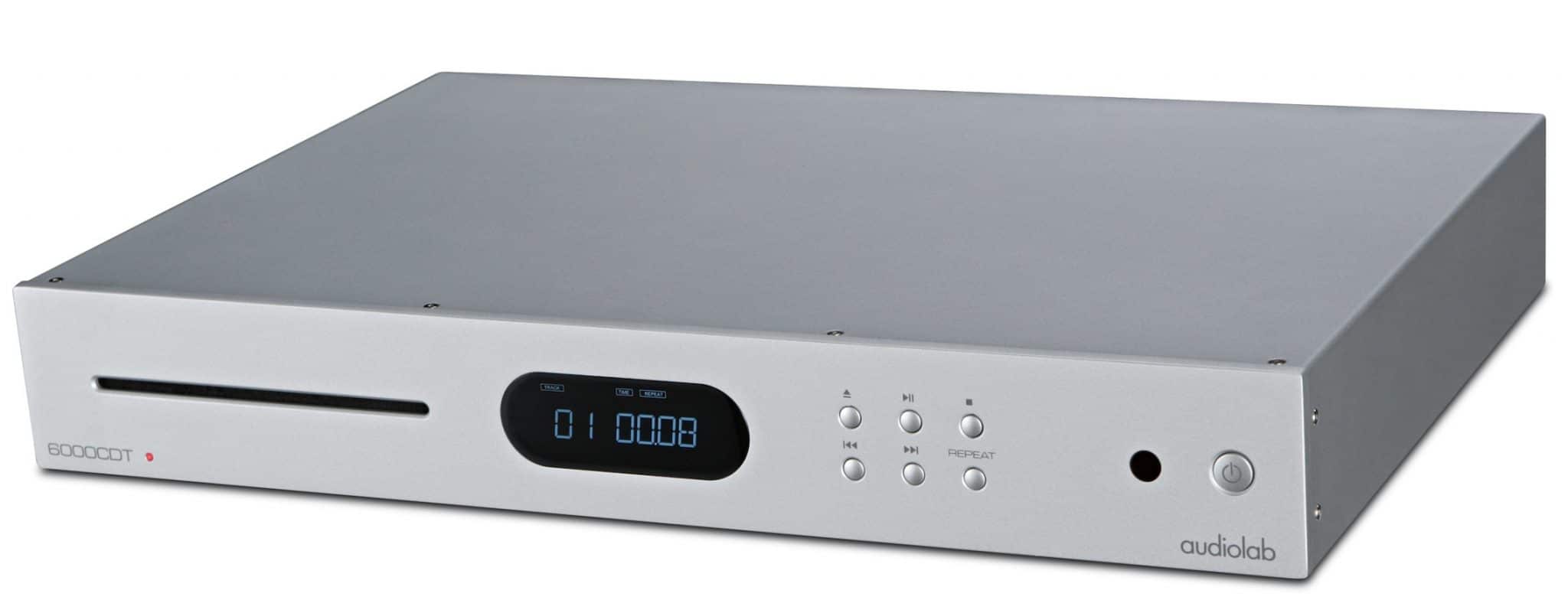
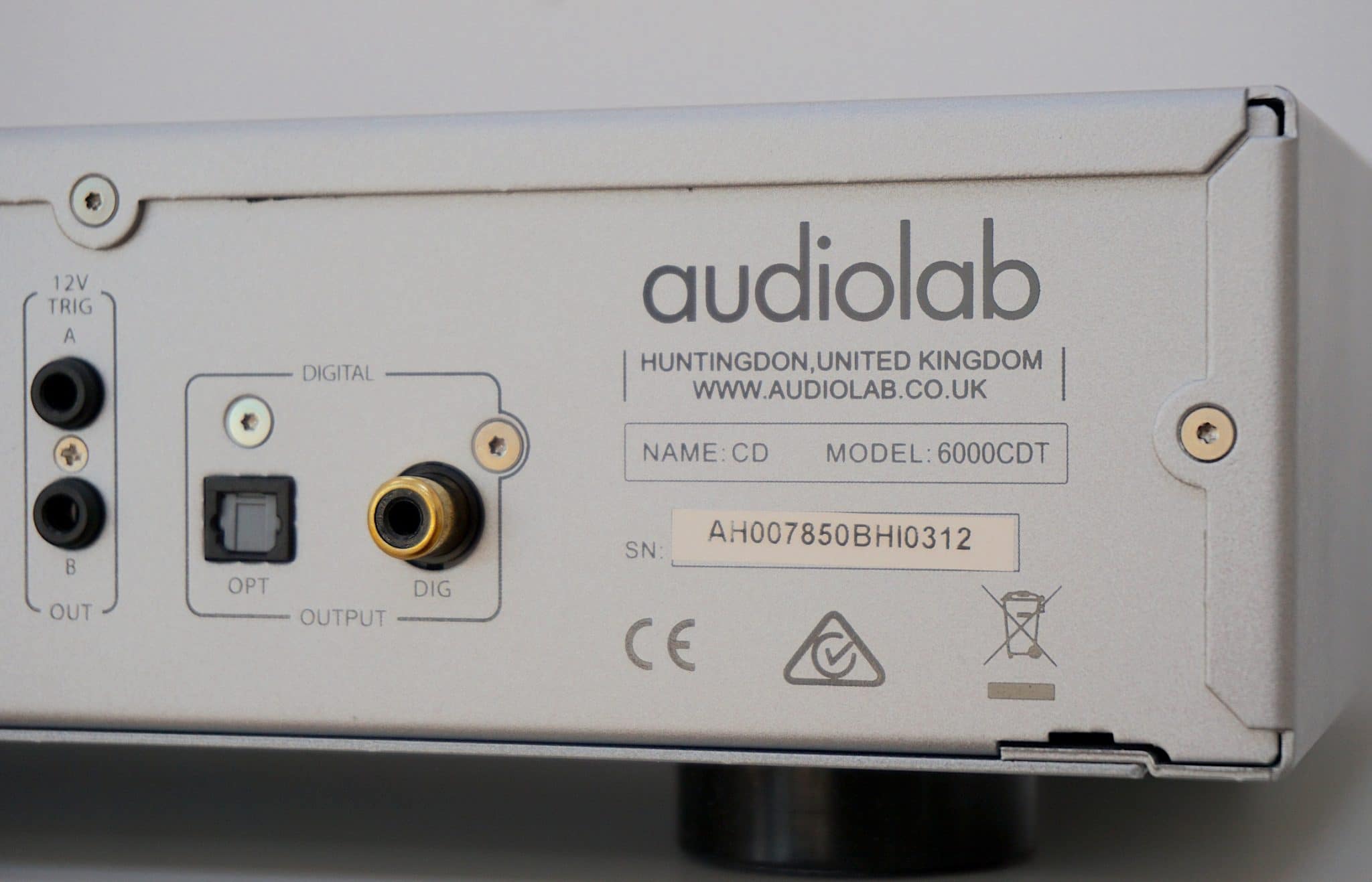


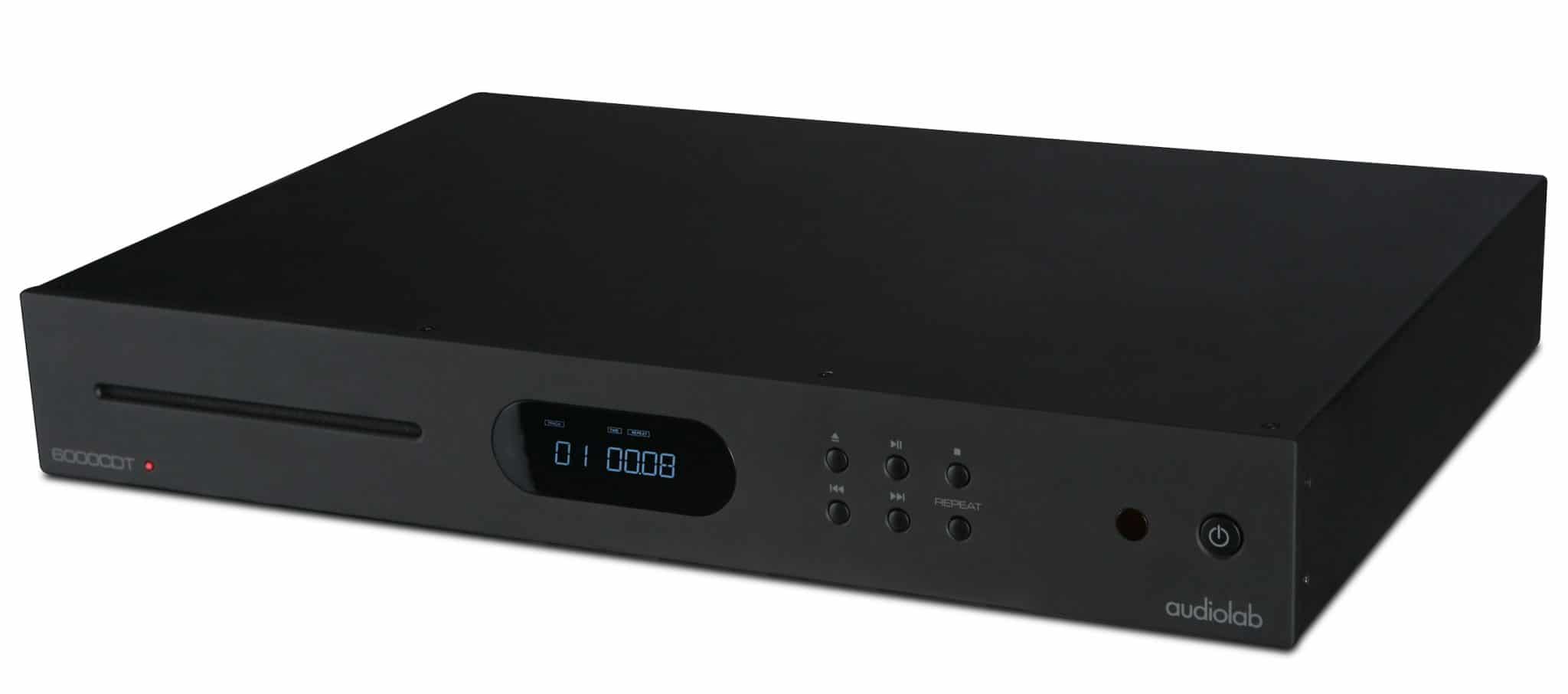


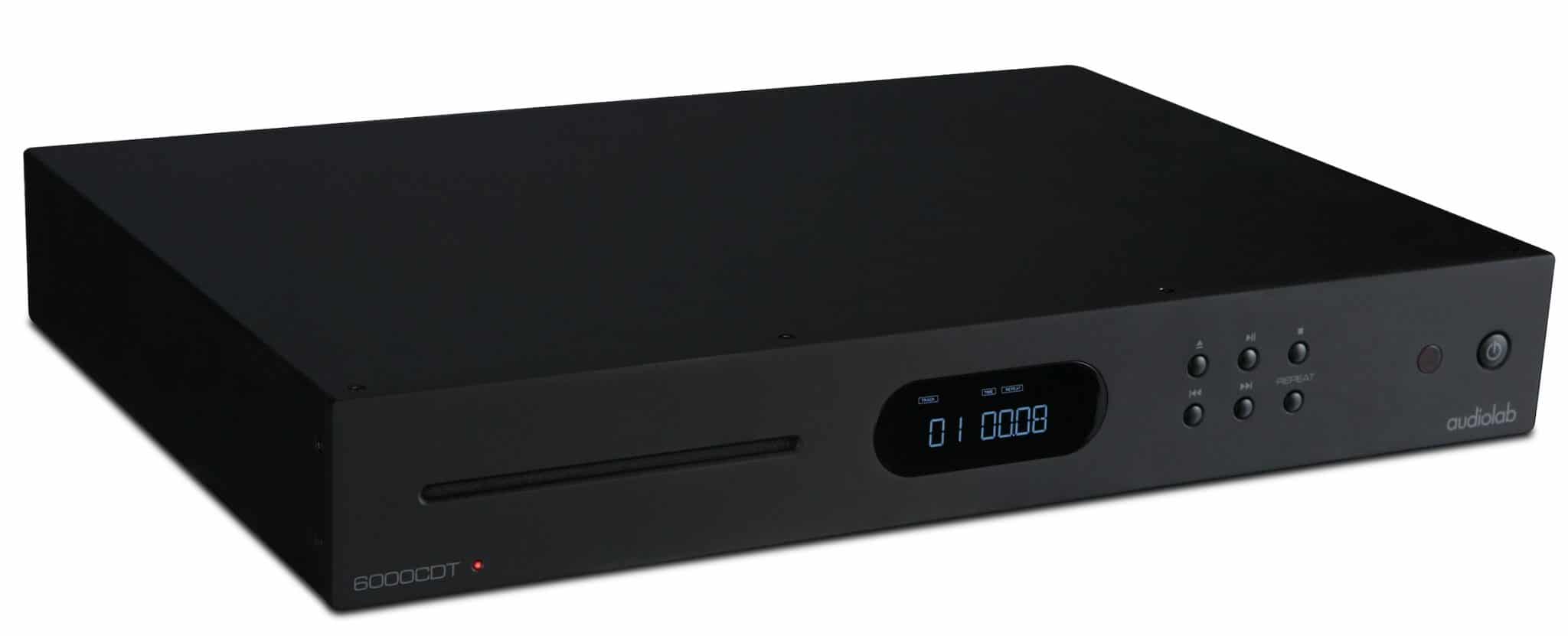
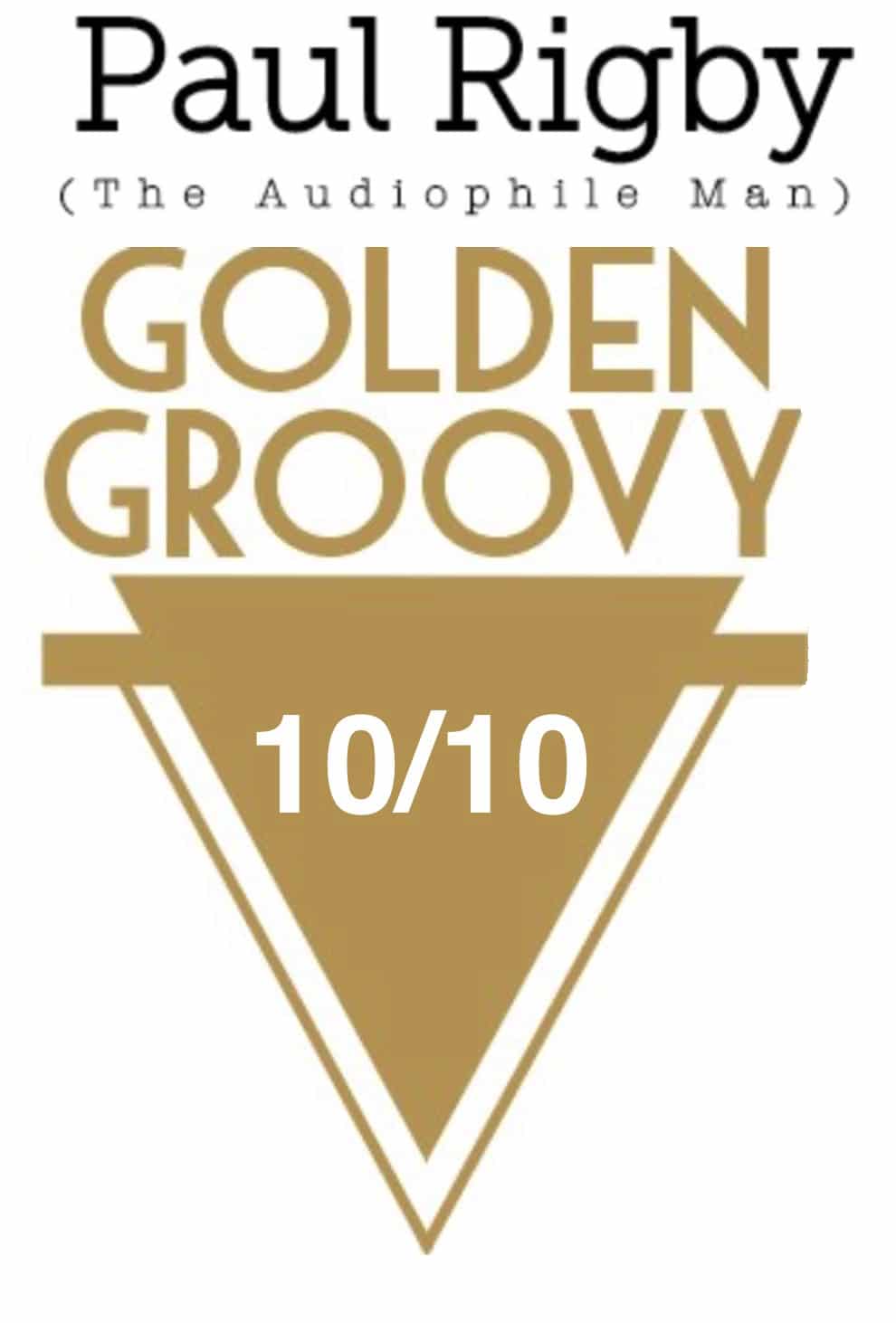
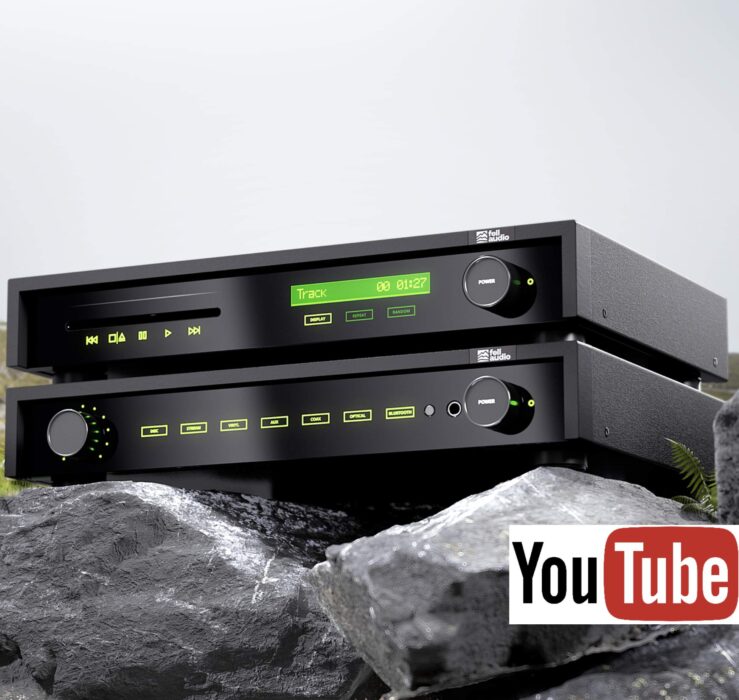
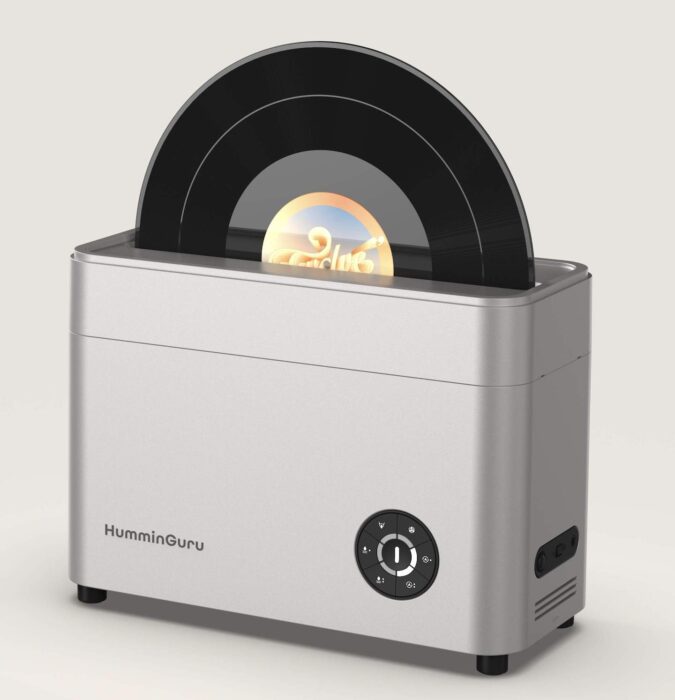
Hi Paul, Great review, thanks! I have 2 questions. 1. Wondering if you’d had a chance to hear the 7000CDT from Audiolab yet, and if so how does it compare? 2. How does the AL6000 compare to the Cambridge CXC in your opinion? Many thanks, Teddy
I never managed to grab the 7000 I’m afraid although I assume it sounded excellent, judging by my tests on the 6000 and 9000. And I would expect a graduated improvement over the 6000. Again though, just my educated guess. As for Cambridge – another guess, so bear that in mind – here’s my comparison between two of their amplifiers. I would assume that personality would transfer to their transports, “To dig deeper, imagine a shapely Victorian lady putting on her corset. The 6000A performance could be compared to the lady’s natural hour-glass figure. The CXA61 was a bit like the more precise form achieved once the corset has been added and the laces pulled tight. Many ladies in that situation found it harder to breath and experienced a shortage of air when a corset was worn in such a manner. Beauty came at a price. That’s exactly how the CXA61 sounded. Very shapely but short of breath (it lacked an infusion of air and space).”
Hello Paul,
(Me – late to the party I’m afraid…forgive me)
I love your Victorian lady’s corset metaphor. As an owner of a CXC – now into a audiolab M-DAC, just acquired (previously into a Rega DAC), – in turn into a CXA61, I can hear it now.
So maybe it is the AL DAC making much of the difference? To me it’s the soundstage which has changed most dramatically. Bowie’s Heroes is now completely transformed and The Bends by Radiohead is well and truly grungy – echo-y, little and large. And as for some 60s Italian film soundtrack jazz the tuned percussion is there, in the room.
I appreciate what you’re saying about the design and engineering of audiolab gear, the ‘personality’ behind it, so maybe I should try to listen to the higher-specced AL transports?
Yes indeed. If you have the budget.
Hi, I watched your video on this and the LEAK CDT. I noticed that you were demonstrably more excited about the Audiolabs 6000 than the LEAK. I’m curious if that’s because multiple years have passed and maybe other manufacturers had caught up or if the edge that was taken of the mids by the LEAK just made it a less exciting listen. I’m considering one of these. I was leaning towards the LEAK because of the wood until I heard your review. I have the KEF R5 Meta for my front L & R and think they’d be a great visual match (though that’s never my first criteria). I’m curious how you think they might sound with this CDT using the Anthem MRX 1140. Not that you’ve heard every pairing in the world, but I’ve heard virtually nothing compared to your breadth of experiences. Currently I use Apple Music via a Apple TV through the eARC channel and it’s pretty good, but I don’t often feel wow’d. Also, while it’s cool to have the immersive experience, I think I prefer an amazing 2 channel immersive recording (though Dark Side of the Moon is pretty amazing in Atmos). It seems like everything is an Atmos recording these days and my Anthem as currently configured isn’t giving me the option of going 2 channel so that I can take advantage of the 2 best speakers in my set. Not looking for you to help config/troubleshoot, just really interested in how you feel that will fit with my rig and what I might expect to find. Currently, I’m just not wow’d by the setup and I’m hoping that I can dig up some of my CDs from the past 20 – 30 years and get more energy from it.
These speakers round out the full system:
KEF R2 Meta center channel
SVS SV2000Pro subwoofer
(4) in ceiling KEF CI160QR and for left, right ceiling surrounds
(2) KEFCI200QL in wall surrounds
Ho John – in short, the Leak will add a warming, fuller, cosy sound to your system. The 6000CDT will result in a more balanced and neutral sound. So it depends on your preferred musical bias.
Paul, and the importance of digital cable? Shouldn’t I have to use an expensive one to get good results?
Get the best you can afford, Francisco. In HiFi, everything is important. Despite what you might hear/see elsewhere.